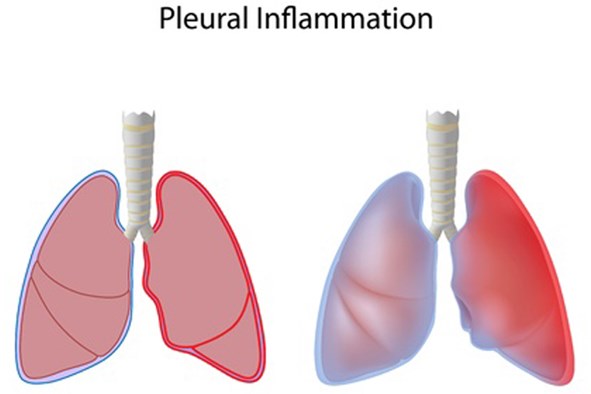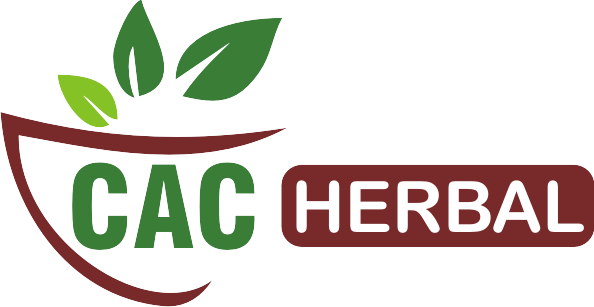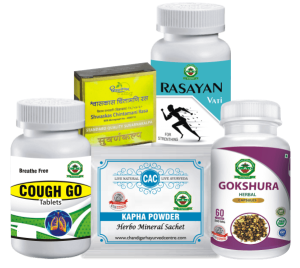
Pleurisy
- 07 Oct, 2021
- Posted by admin
- 0 Comment(s)
Pleurisy is a lung-related disease in which there is severe pain in the chest and this pain is increased by taking and leaving the sand. It affects the layer of tissues that protect the lungs, increasing the discomfort. Know what are the causes and symptoms of pleurisy in this article.
What is pleurisy?
There is a layer of tissue above your lungs called the pleura. It separates the lungs from the chest wall, but when there is swelling in the pleura due to some reason, that condition is called pleurisy. There is severe pain in the chest and the pain increases more while breathing. One layer of tissue covers the lungs from the outside and the other layer separates it from the inner chest wall. There is little space between these two pulverized layers in which the fluid is filled. Normally, both layers of tissues work smooth and do not obstruct the lungs from spreading and contracting while breathing and exhaling. But when you have psoriasis, these tissues get swollen as a result of which the two layers rub into you, causing pain while breathing and exhaling, but no pain when you stop breathing. So if you have severe chest pain, do not consider it just a heart attack, because this is also the main symptom of pleurisy.
CAUSES:
Viral Pleurisy
Pneumonia
Pulmonary embolism
Pericarditis
Lung abscess or empyema
Tuberculosis
Dehydration
Collagen Vascular diseases including Systemic Lupus Erythematosus and Rheumatoid Arthritis
GENERAL SYMPTOMS OF THE DISEASE
Reason
Pleurisy can occur for many reasons. Pleurisy is often caused by bacterial infections such as pneumonia. It can also be caused by flu and fungus. Other reasons include:
- Autoimmune disease, such as lupus or rheumatoid arthritis
- Viral Pleurisy
- Pneumonia
- Pulmonary embolism
- Pericarditis
- Heart failure
- Liver and pancreatic illnesses
- Lung abscess or empyema
- Tuberculosis
- Dehydration
- Collagen Vascular diseases including Systemic Lupus Erythematosus and Rheumatoid Arthritis
- Chest injury
- Sickle cell anemia
- Pulmonary embolism
- Rib fracture
- Bronchitis
- Fungal and Parasitic Infections
- Complications associated with heart surgery
- Lung cancer
- Other types of cancer affect your lungs and pleura
- etc
Symptoms of pleurisy
The main symptom of pleurisy is severe chest pain or persistent pain. Pain may occur on one side or both sides of the chest. It also increases with breathing. Other symptoms include
- Breathlessness or rapid breathing
- Cough
- Lose weight without reason
- Fast heart rate
- Inspiratory chest pain
- Cough
- Chills
- Weight loss
- Poor appetite
- Pain may limit chest expansion on affected side
- Rapid shallow breaths
- Itching in sites on the back (near the site of the lungs, but no visible rashes
- Dizziness
- Tiredness
Pleurisy is usually caused by a viral infection. In such cases its symptoms include:
- Headache
- Joint pain
- Sore throat
- fever
- Chills
- Muscle aches
Diagnosis of pleurisy
To diagnose pleurisy, the doctor asks for your medical history and performs physical examination. The doctor may recommend the following tests to find out the cause of pleurisy:
- Blood test – To find out if there is any kind of infection, the doctor does a blood test.
- Chest X-ray – A chest X-ray shows what the condition of the lungs is. This shows whether the lungs are completely inflated or there is a fluid or fluid between the lungs and the ribs.
- CT scan– A CT scan is done to get a detailed image of the chest to find out the exact condition of the plura and the causes of pain. If blood is deposited in the lungs, it is detected by CT scan.
- Ultrasound – In this, the image of the internal structure of the body is extracted with the help of high frequency sound waves, it helps to find out whether the cause of pain is pleural effusion.
- Heart monitoring test is done to detect any kind of problem related to ECG-heart.
- Biopsy – Plural biopsy is also recommended to find out the cause of pleurisy. In this procedure, the doctor makes a small incision on the skin of the chest and inserts the needle and removes the tissue sample from the plura for examination.
Risk associated with pleurisy
The risks associated with pleurisy can be severe. It includes:
- Lungs are not getting blocked or as much as they should be
- Puffing in pleural cavity
- Sudden blood flow
- Severe reaction to infection (sepsis)
Inflammation also causes fluid to accumulate in the pleural cavity, this is called pleural effusion. The pain in this condition may be less, but it becomes difficult for you to breathe. The doctor may give you a drug such as Duretics or remove the fluid under the procedure.
Ayurvedic view in Pleurisy
In Ayurveda, this condition is known as Parshwashool.
In Ayurveda, every one of the three doshas, vata, pitta kapha assume parts in causing parshwashool. When Vayu gets aggaraved and gathers from the body into the lungs. This kapha is thick. Hot Pitta melts kapha and changes over it into watery liquid. Accordingly, there is amassing of watery fluid in lungs. This disturbance of kapha can stifle the gastric fire and hamper the absorption. Powerful treatment is accessible in Ayurveda for parshwashool which incorporates certain Ayurvedic treatments, herbs and eating regimen changes.
Ayurvedic medicines by CAC
-
Cough Go Tablets:
These herbal tablets are beneficial in cough, cold, bronchitis, & other respiratory disorders. Cough Go Tablets are ayurvedic formulation containing Sonth (Zingiber officinale), Mulethi (Glycyrrhiza glabra), Pippali (Piper longum), Kali mirch (Piper nigrum), etc. All these ingredients show antioxidant, anti-inflammatory, bronchodilator, & expectorant properties. This is very beneficial in fever due to phlegm and treats the chronic cough. It helps in reducing cough, headache, rhinitis, etc.
Recommended Dosage – Take 1 tablet twice daily with normal water.
-
Cough powder:
This ayurvedic powder is very effective in cough with mucus, cold, and other respiratory disorders. Cough powder is a mixture of some ayurvedic ingredients like talisadi churna, abharak bhasam, godanti bhasam, lakshmi vilas rasa, yashtimadhu churna, tankan bhasma, kaph ketu ras. These ingredients in combination show antioxidant, anti-inflammatory, bronchodilator, & expectorant properties.
Recommended Dosage: Take 1 sachet twice a day with honey.
-
Gokshura Capsule:
Gokshura capsule is pure ayurvedic medicine which is very effective in ascites as it has anti-inflammatory properties that reduce the swelling of the abdomen. It also acts as diuretic which causes increased urine secretion from the body and removal of all the toxins. These capsules contain pure extract of Gokshura (Tribulus terrestris).
Recommended Dosage: Take one capsule twice daily with normal water
-
Immuno up sachet
It is pure herbal formulation. The importance of working on your immunity is now on an all-time high. If a person fall ill easily, it means their body’s immunity is low. This pacifies tridosha (Vata, pitta and Kapha), strengthen your immunity, keeps your digestive system fit and also detox your body. it also works in cold, fever and flu conditions. It consists of effective levels of antioxidants, Vitamin C and E which circulate in the body to protect it against the damage caused by free radicals. it is a natural immune-modulator properties to prevent and ease coughing, sneezing, etc. It provides quick relief from early signs of running nose, Sore throat, body pains, and weakness.
-
Swas Chintamani Ras
It is an effective Ayurvedic medicine that comes in the form of tablets. It is specifically used for the treatment of respiratory diseases.
Key Ingredients:
- Shuddha gandhaka or purified and processed sulphur
- Mukta bhasma or calx of pearl
- Swarna bhasma or calx of gold
- Abhraka bhasma or calx of mica
- Makshika bhasma or calx of copper and iron pyrite
- Shuddha parada or purified and processed mercury
- Loha bhasma or calx of iron
Home grown Medicines
- Garlic clove 1 in number gone up against purge stomach with water is great.
- Decoction arranged with tuisi leaves, pudina, iavang, dark pepper demonstrates valuable, 50ml 2-3 times each day.
- Triphaia Churna ½ teaspoon twice day by day is great, if understanding is clogged up.
- Bed rest is useful for these kind of patients.
- Eating regimen and Lifestyle Advice
- Pleurisy is an intense condition that endures from few days to two weeks. Amid this period, the individual should take finish rest and stay away from effort, introduction to rain, cool, AC, hot sun and diseases.
- Light straightforward warm nourishment ought to be taken that isn’t too sleek and fiery. Chilly water, frosty beverages, frozen yogurts ought to be dodged.
Home Remedies
- Take a blend of powdered cinnamon, cardamom and pepper with nectar thrice daily.
- Shringa Bhasma is the medication of decision. Half gram of this is to be given to persistent 3-4 times each day blended with nectar.
- Ras Sindoora and Suvarna Vasanthti Maini Rasa are other Ayurvedic drugs however these ought to be taken under supervision.
Do’s and Don’ts
- Fried and refrigerated nourishment stuff is entirely restricted.
- Physical activities, sexual liberality, introduction to frosty breeze and rain ought to be held back.
- Patient ought not rest amid day time.

